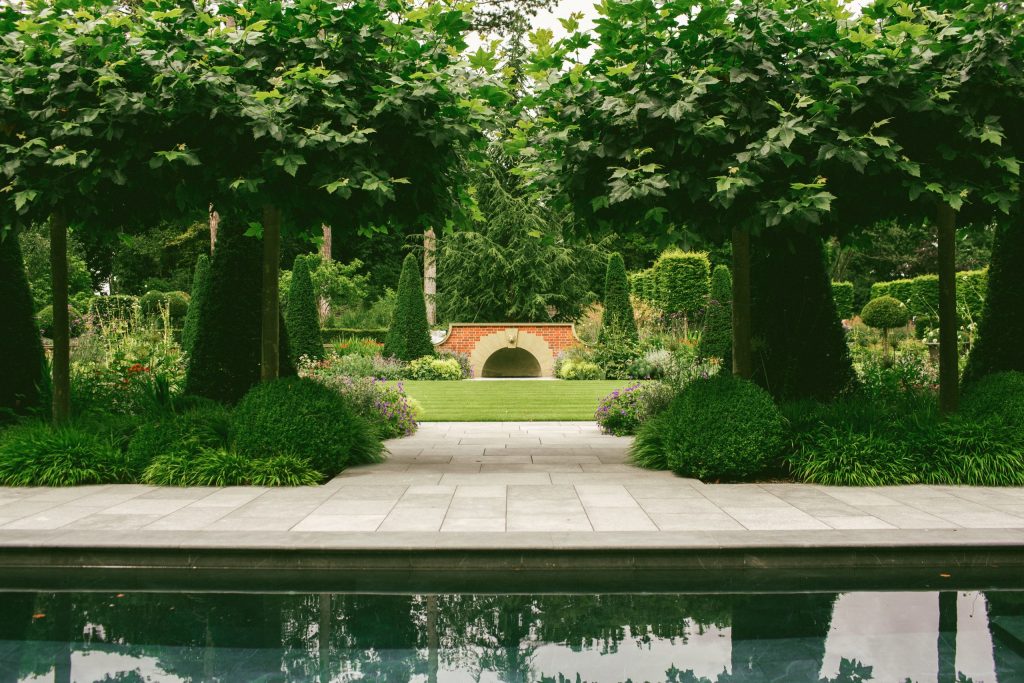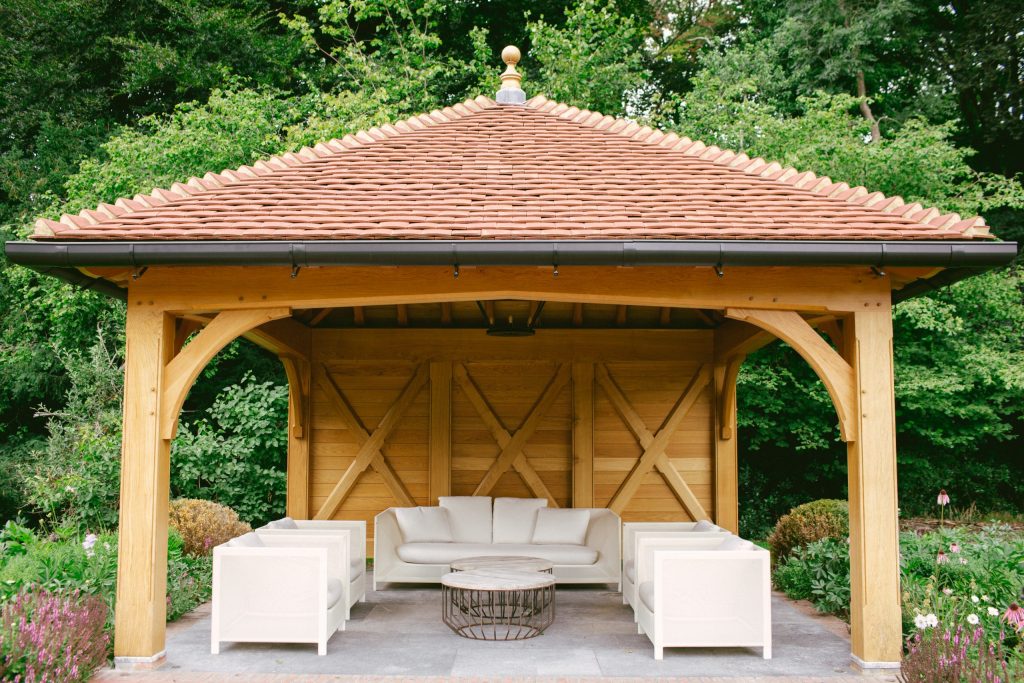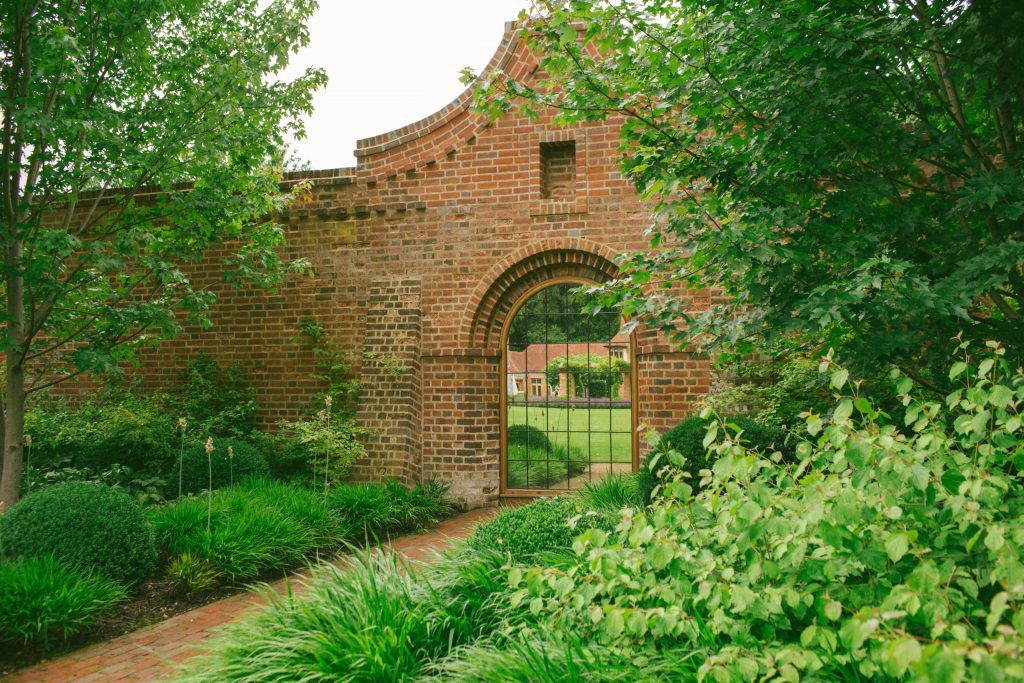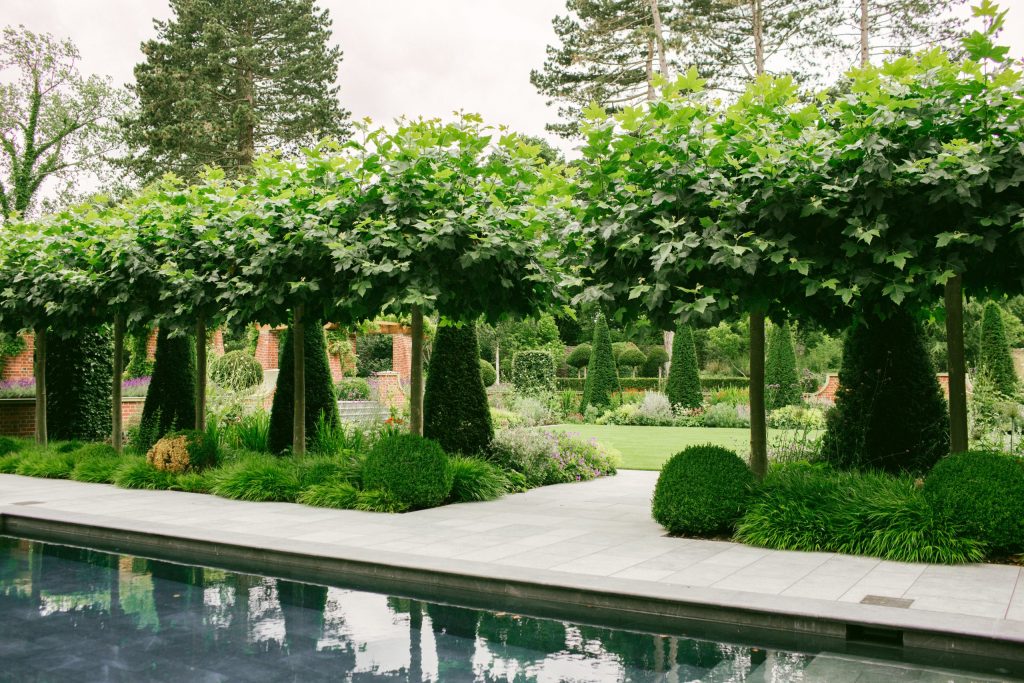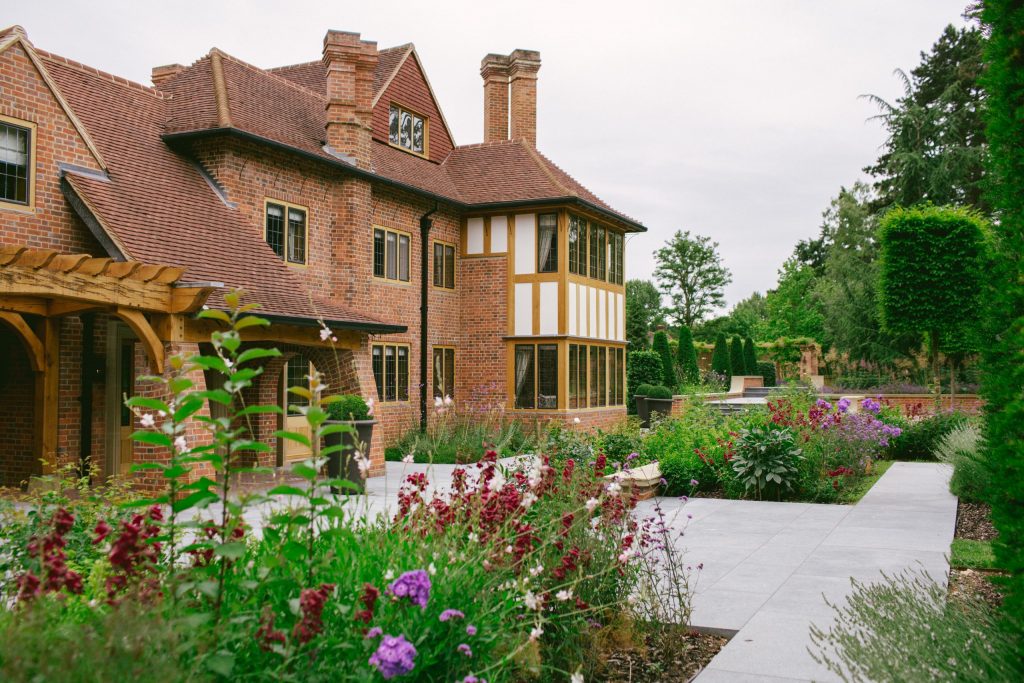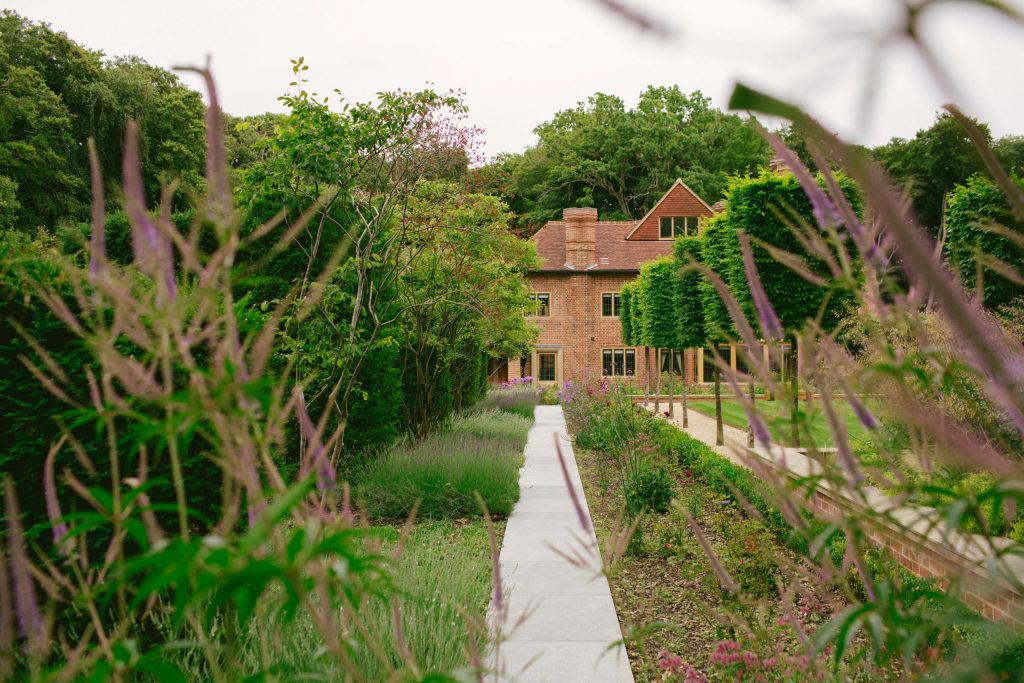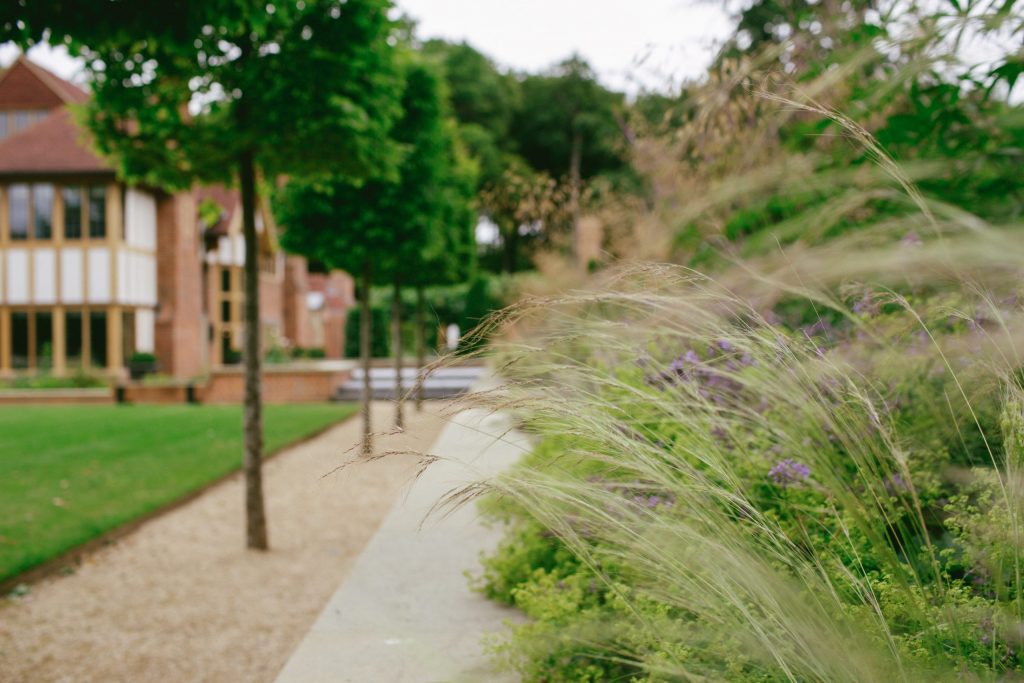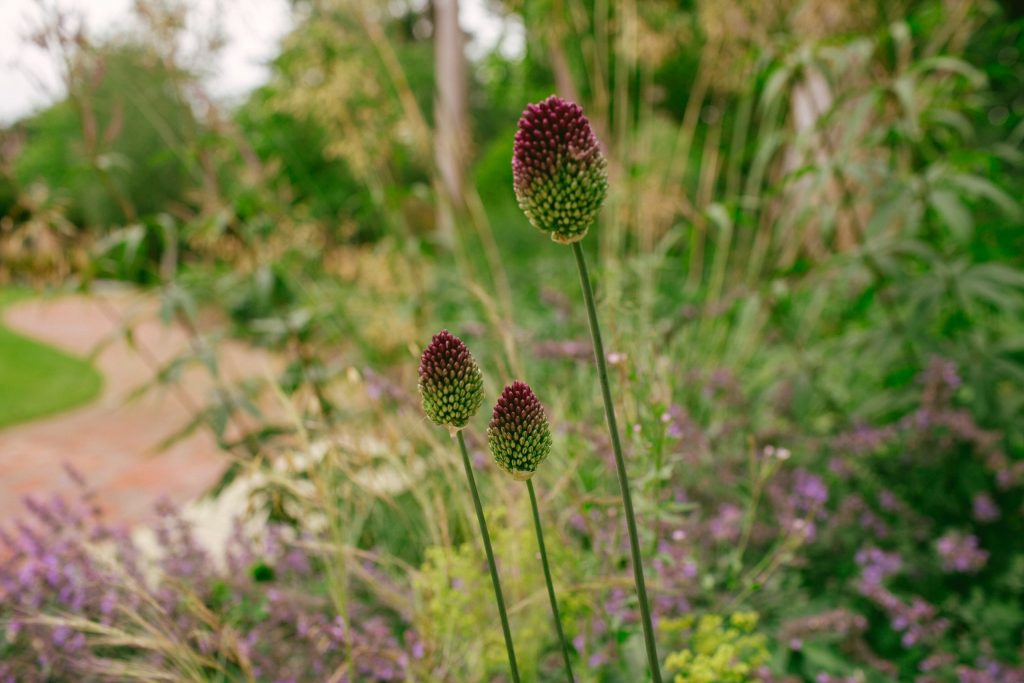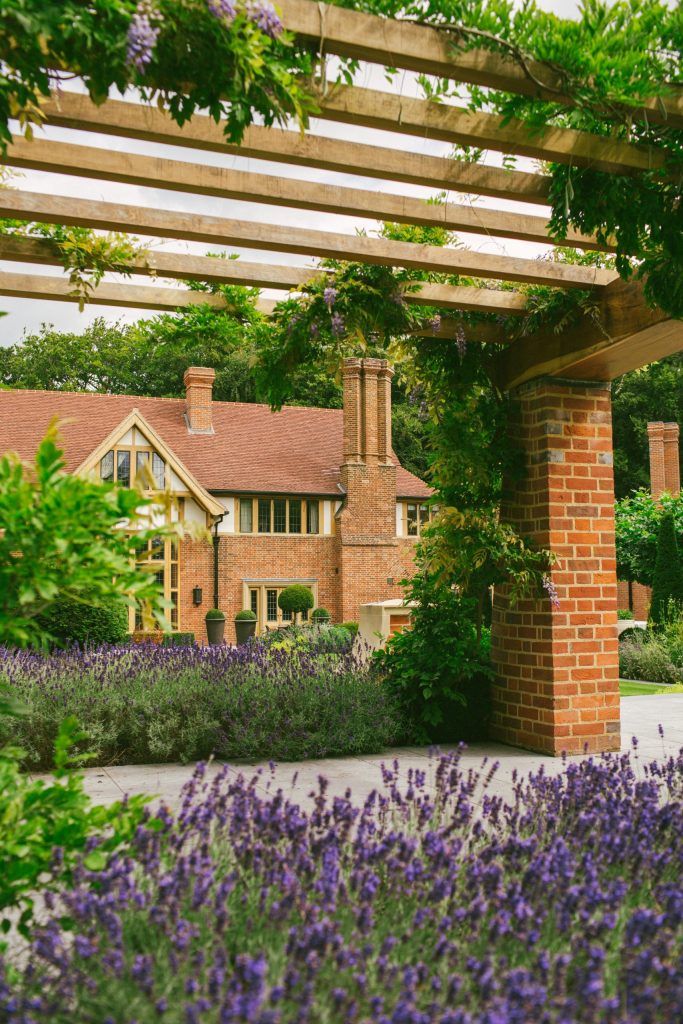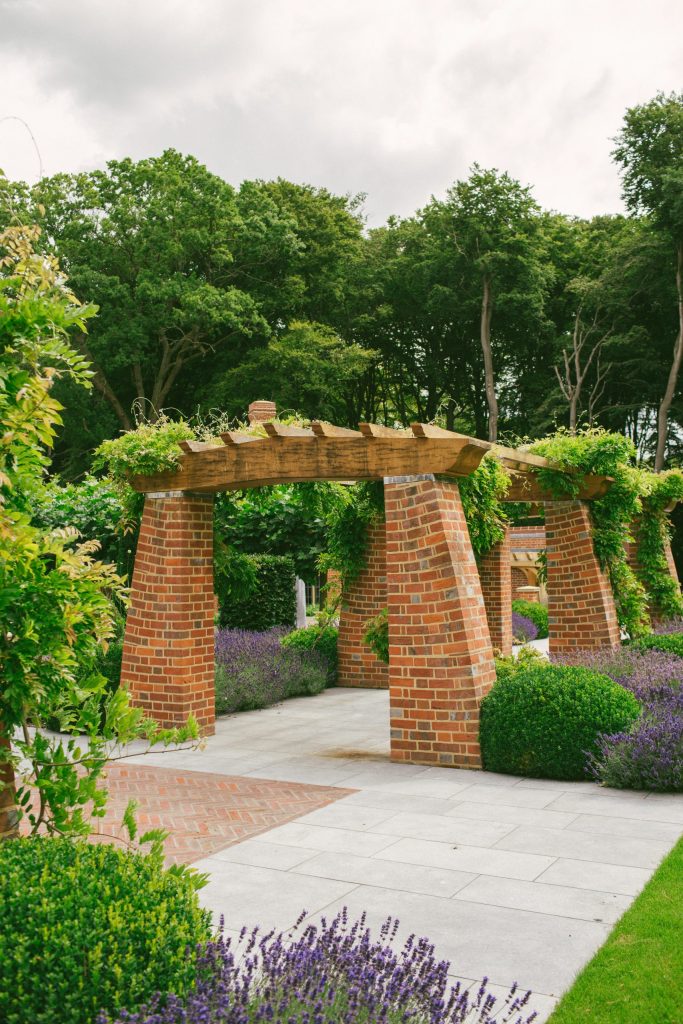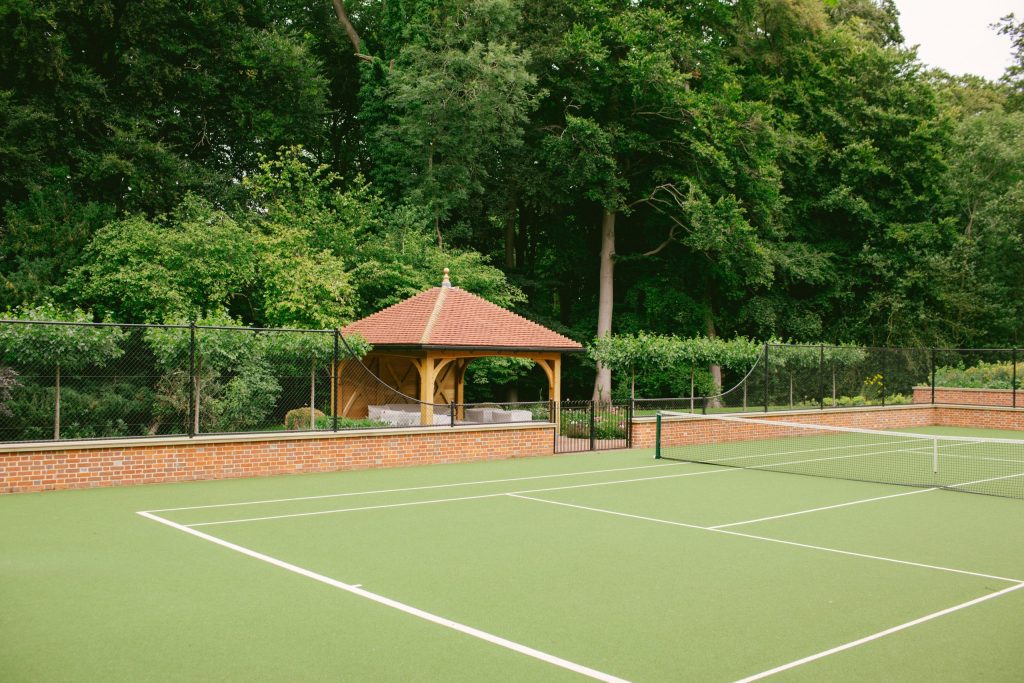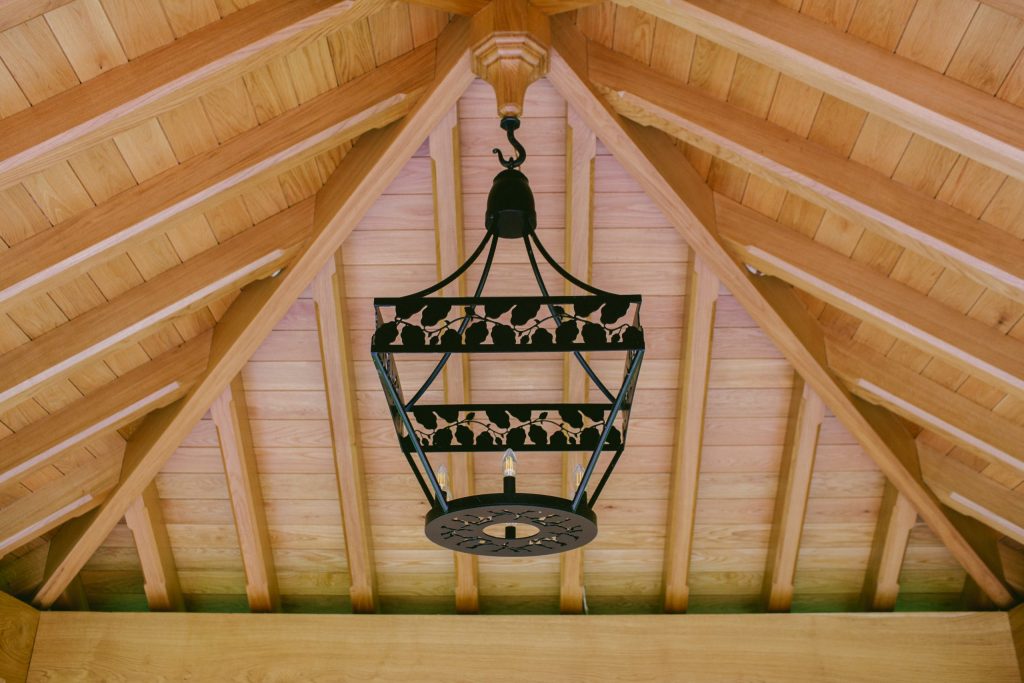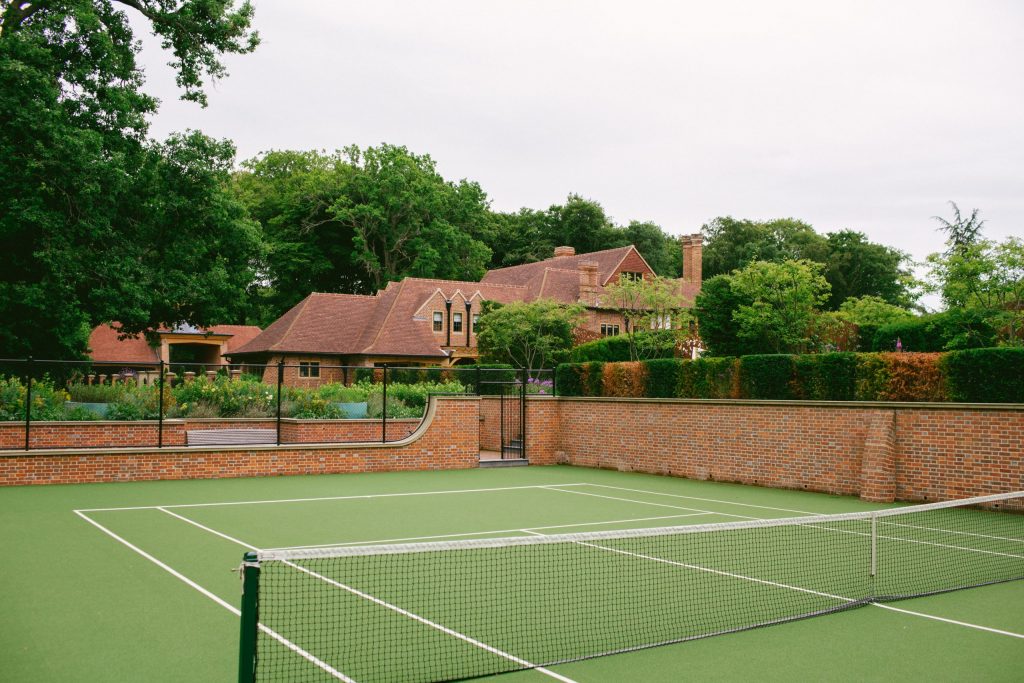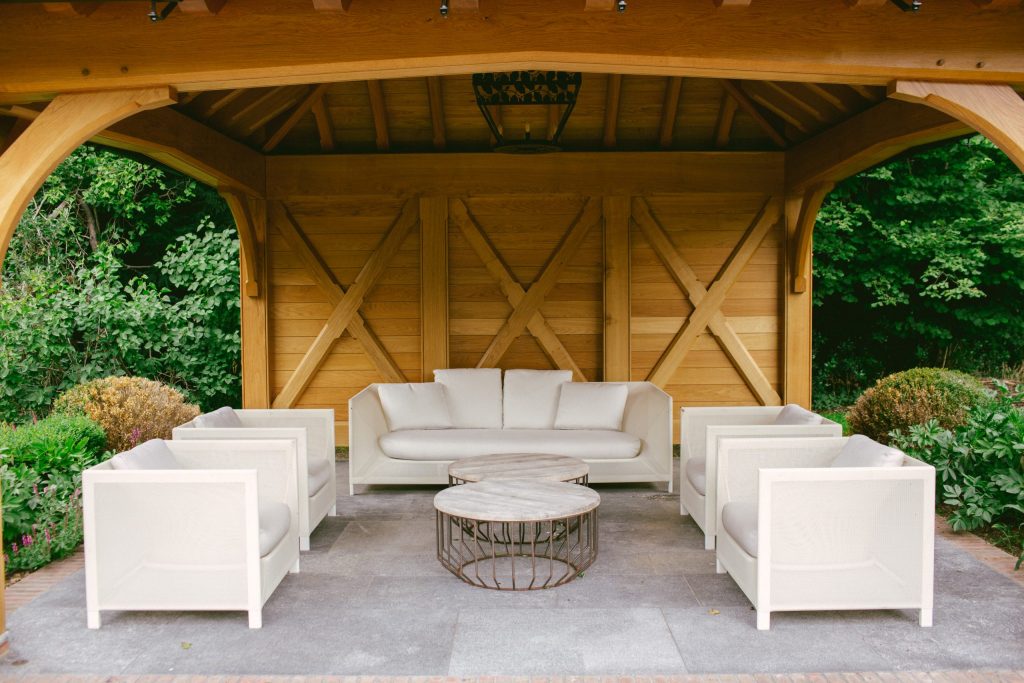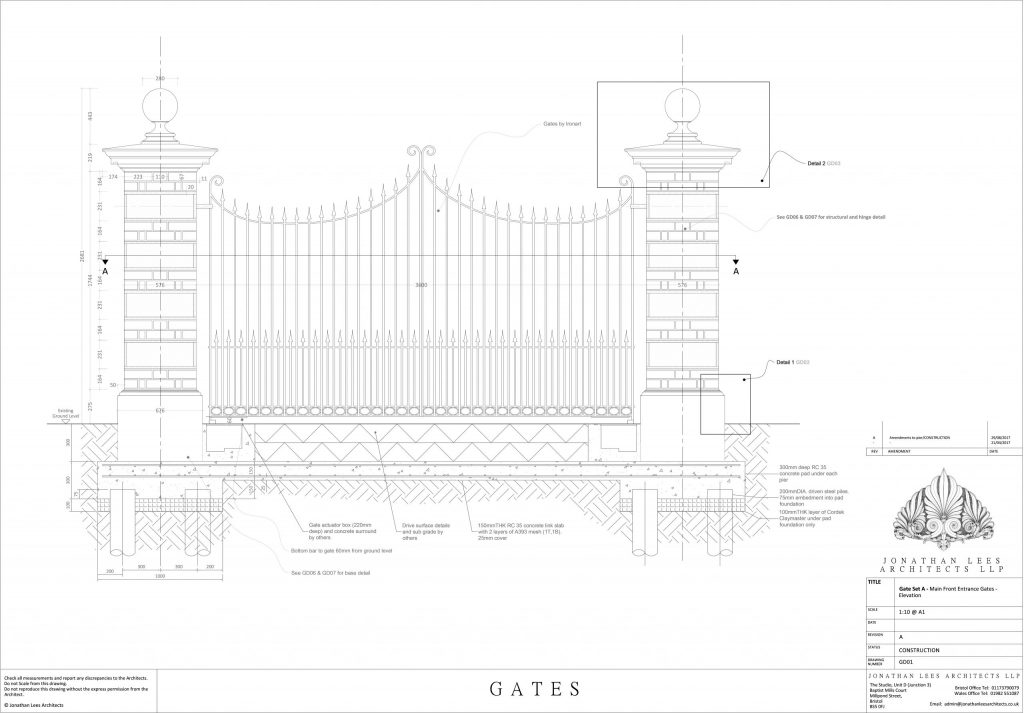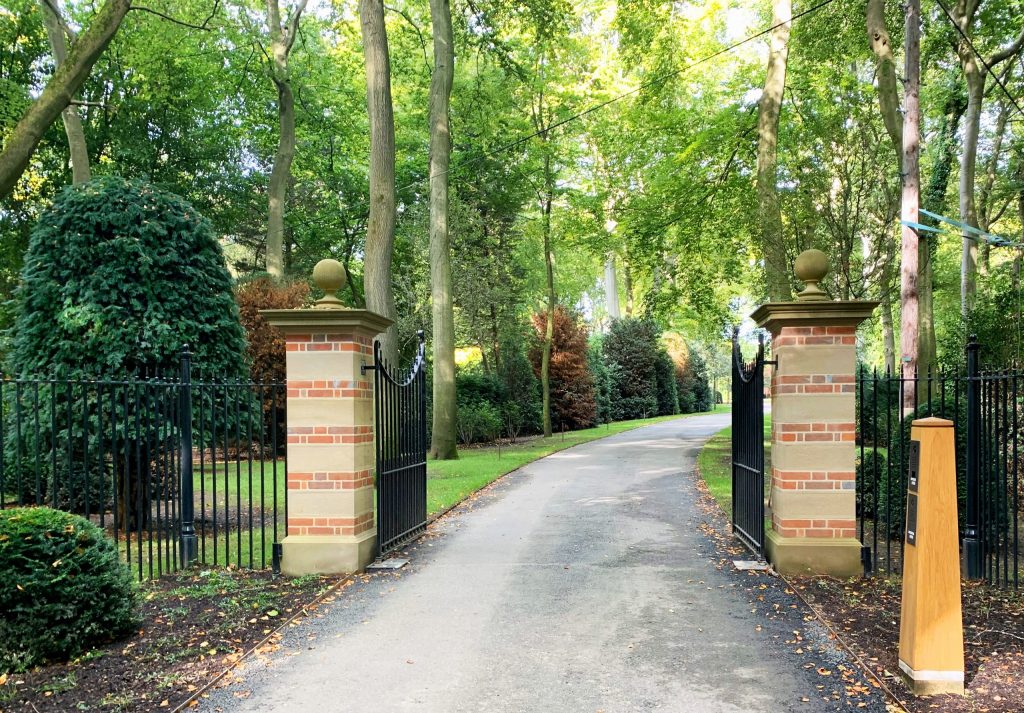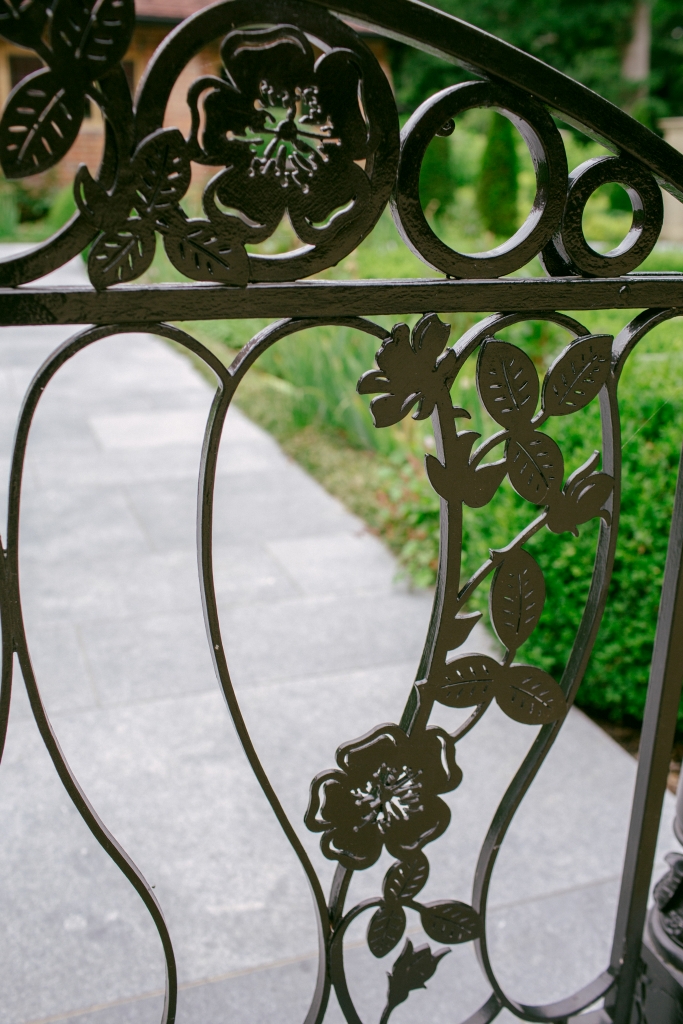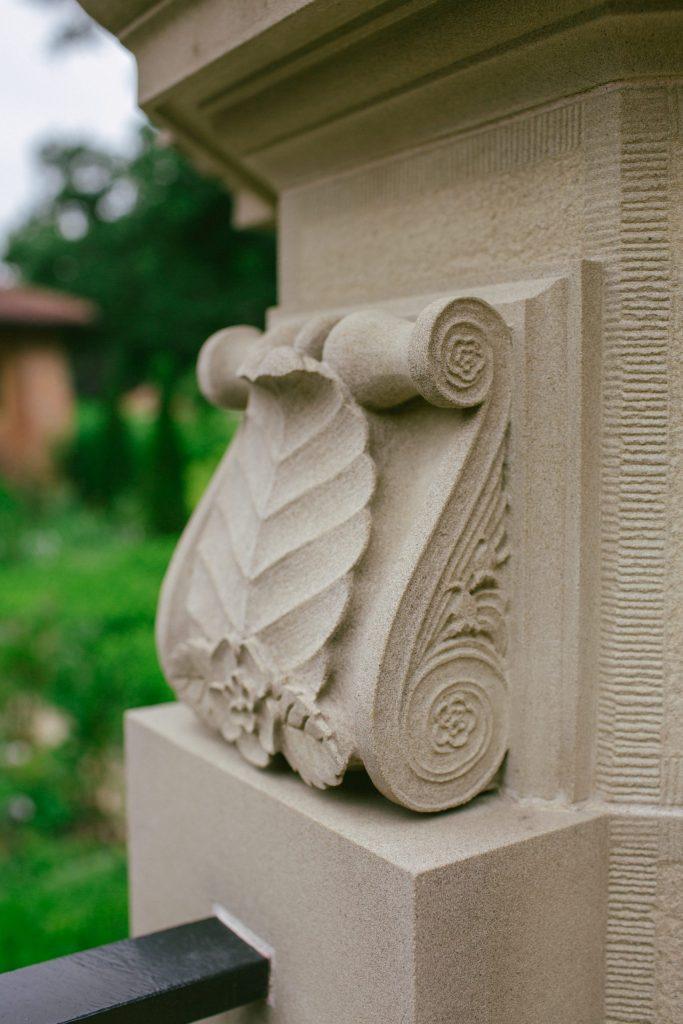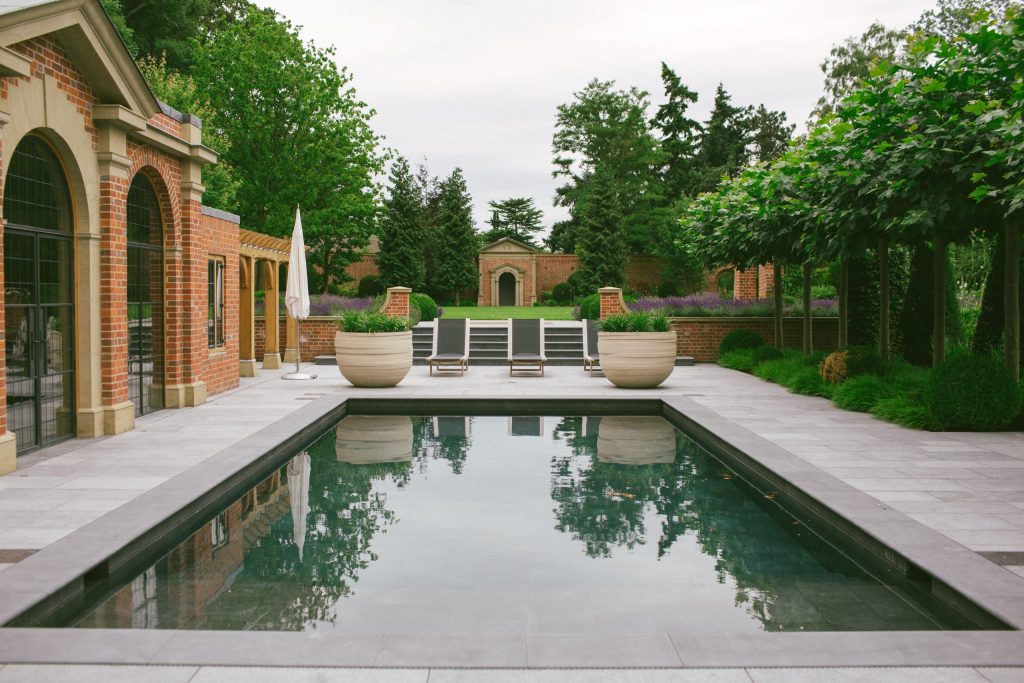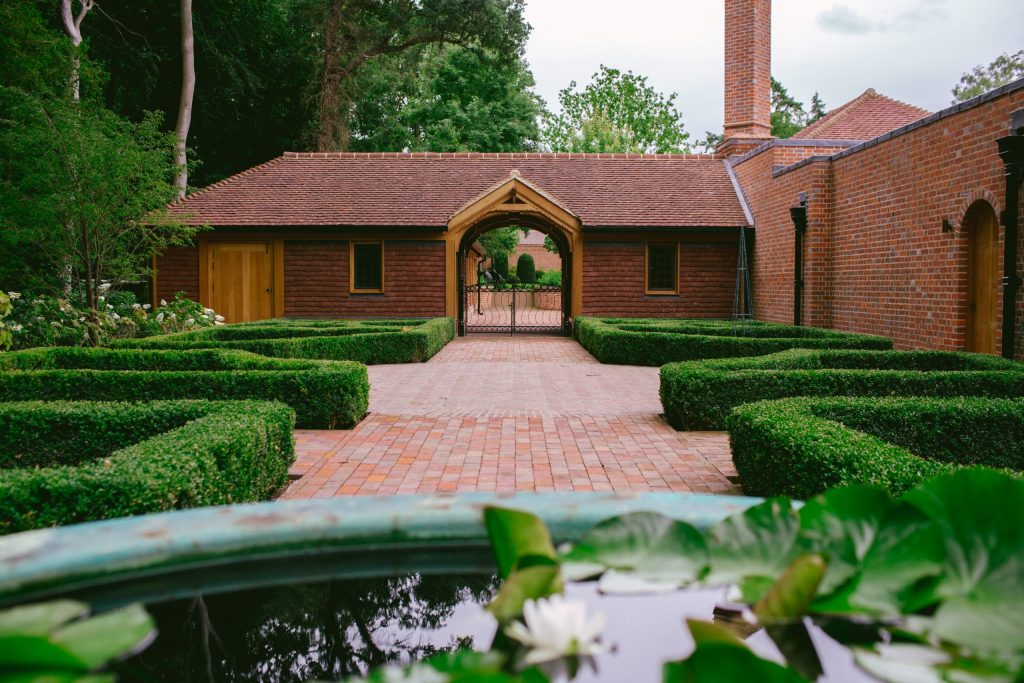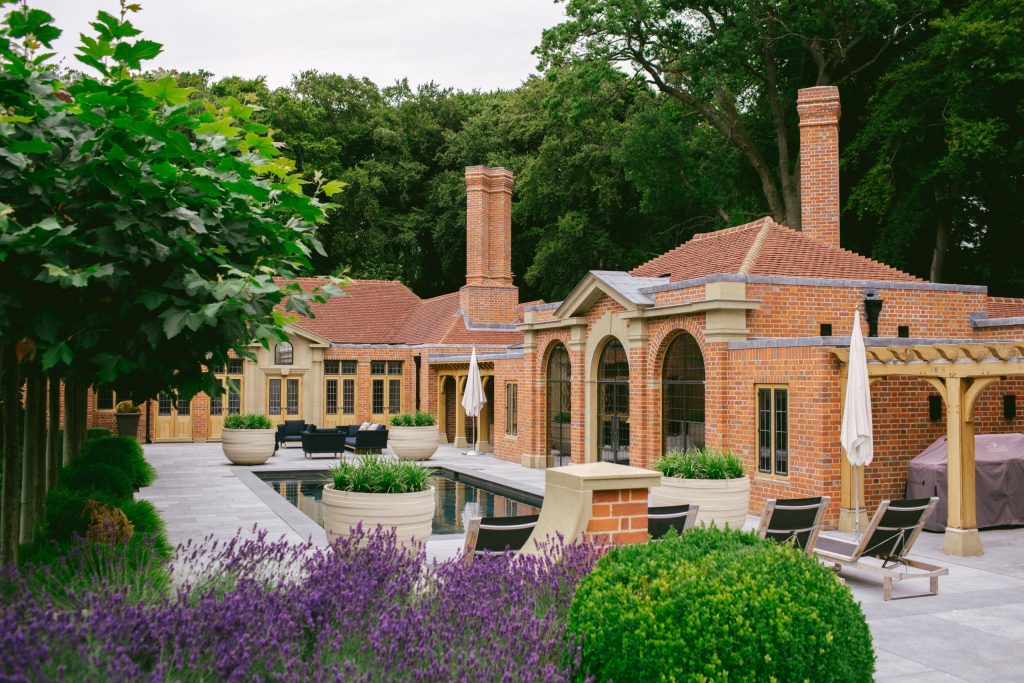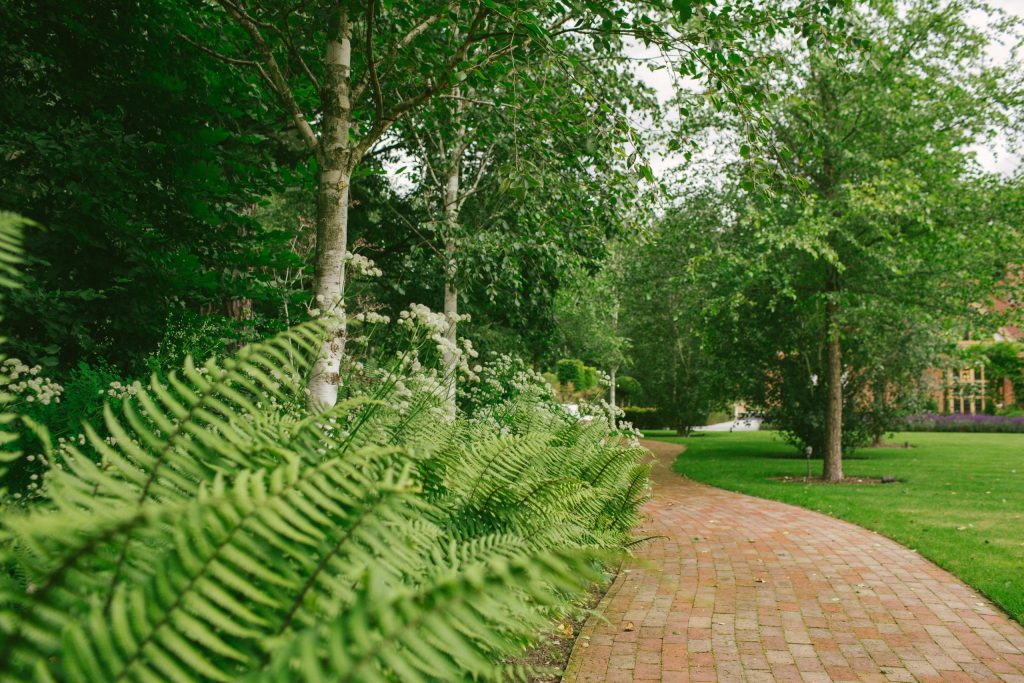Project Series
Arts and Crafts Country House Garden
– for a country estate in Oxfordshire
Written by Jonathan Lees RIBA.
‘No house is complete without its garden.’
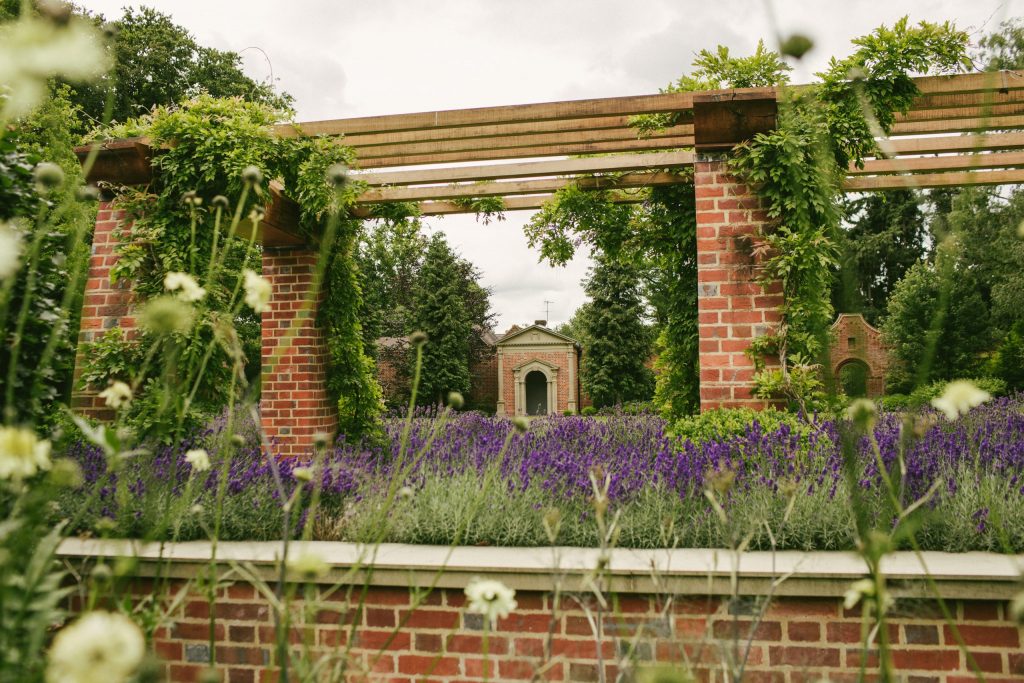
View through the brick loggias towards the Belvedere Garden Folly
No house is complete without its garden. Luytens and Jekyll, in their collaboration, created some of the most beautiful gardens of the Arts & Crafts period and perhaps in the history of our domestic landscape design. Jekyll collaborated with Lutyens in such a way to create picturesque gardens that very much enhanced, rather than competed with the houses, whilst Humphrey Repton and Lancelot ‘Capability’ Brown created expansive landscapes to set the scene for country houses that are world renowned.
The gardens at this country estate in Oxfordshire were designed in the same language as the house. When the garden designs were started, we were already a long way through the construction phase of the main house. However, much as it was tempting, there was no way we could start the garden build during the main construction of the house because the grounds were overrun with construction materials and personnel, all frantic with the almost impossible task of meeting the client’s deadlines.
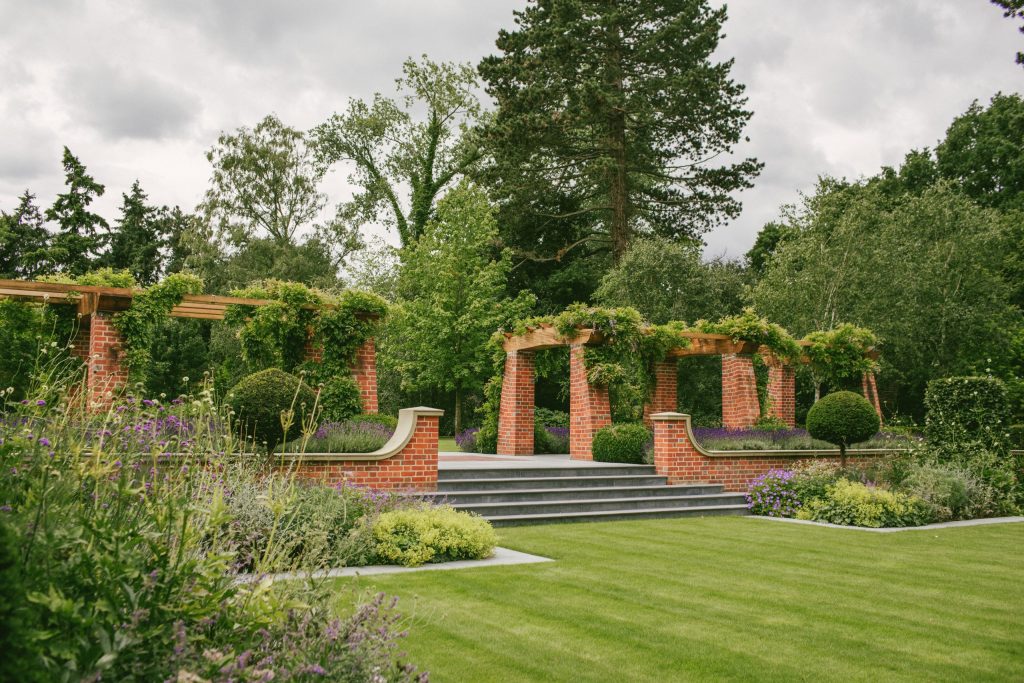
Steps up to the brick loggias
‘…a series of spaces were needed to link the various gardens together……’
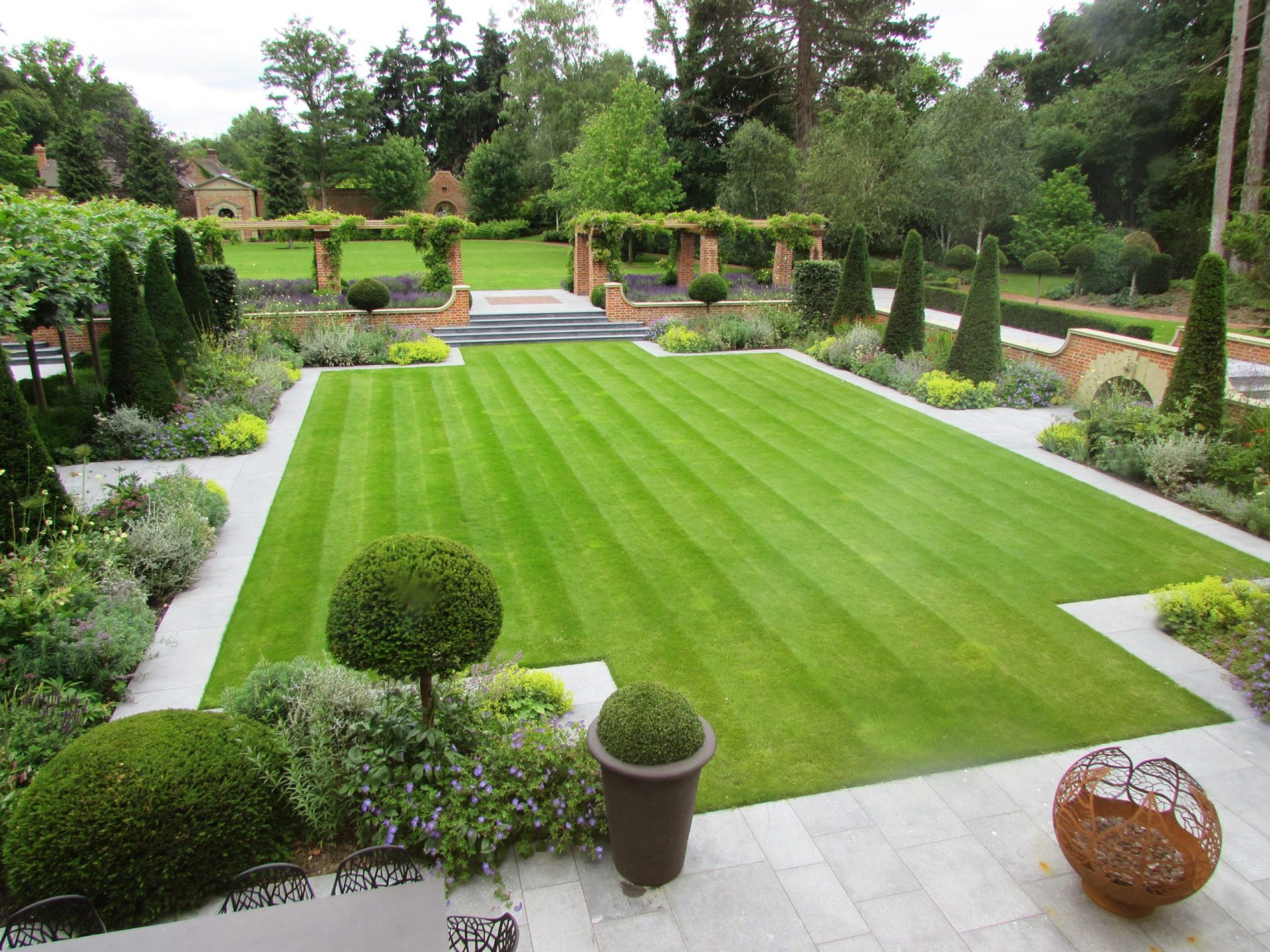
The front lawn viewed from the house
Although the grounds of the site are relatively extensive, a lot of the land to the North is dominated by the ancient woodland. Little was left to the East and North of the house but a beautiful swathe of open space was given over to potential gardens to the South and West that was, at the time, formed largely of lawns. There were numerous conifers planted throughout the entire garden which needed to be stripped back. It became quickly evident following the initial design proposals, that a series of spaces were needed to link the various gardens together, and to create a space that would marry with the architecture of the house.
‘Our team produced designs and details for every architectural feature on the site…’
Whilst developing the designs for the Summerhouse, my team and I began to develop proposals for various structures, out-buildings and features in the gardens that would frame the house and link the wings together, this led to a collaboration with Hendy Curzon that used their experience, skill and knowledge to develop outstandingly beautiful seasonal gardens to every conceivable corner of the site, whilst working closely with us to develop the architectural features. Our team produced designs and details for every architectural feature on the site, from brick walls and iron gates to the tennis court pavilion through to the principal features of the bridged apse fountain and to the open brick loggia of the South lawn.
Lydia and I developed a series of models and sketches that showed how each and every one of these areas would work, as well as how the axis lines could be enhanced to create a sense of place in the gardens, framing the incredible planting work that the landscape designers had done. Top of our list was the creation of the loggias at the centre of the site, that linked the pool terrace to the West gardens via a wide causeway. The causeway was created using the flame-textured Kilkenny Limestone that was used to form the swimming pool terrace that is framed by the pleached trees and planted beds created by Hendy Curzon.
‘to provide a space to wander through the garden undercover whilst deep in thought…’
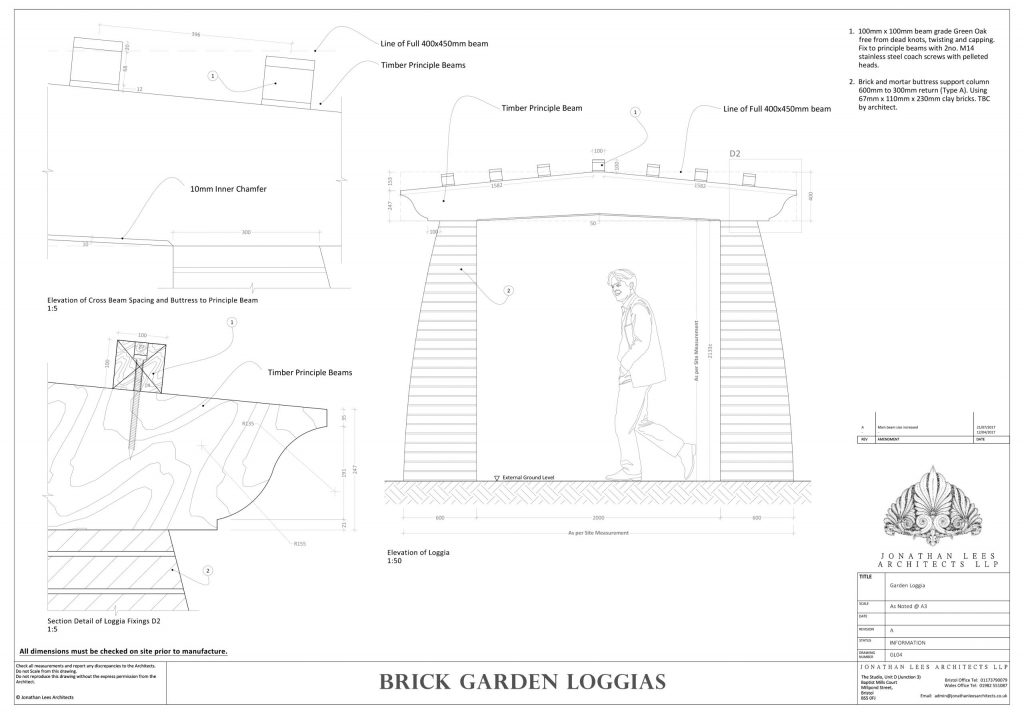
CAD drawing of the brick garden loggias
The Loggias themselves consist of two structures, both matching and formed of gigantic brick buttresses carrying an immense single piece of cambered oak which have large cyma mouldings to the ends. These beams were constructed from one section of oak and were cut and formed with chainsaws by Gelder Joinery. They are linked with thick green oak rafters that provide a frame for wisteria to cover. After only a few years of growth the wisteria has interlocked each of the beams and rafters and provides a natural net over the loggia with its pungent scent and light green leaves setting off the richness and detail of the oak and the texture of the brickwork to the piers. The loggias are there to serve one purpose only and that is to provide a space to wander through the garden undercover whilst deep in thought. The end of the loggia links to a path leading south to the crochet lawn and an intimate garden developed by Hendy Curzon. The wide path crosses a bridge over a circular pond and fountain thatare on the centre axis line of the Summerhouse. This pond is a simple but enjoyable feature of a stone apse ‘sunburst’ with voussoir stones radiating from the back of an arch in a single piece stone to voussoirs on the face of the arch. A carved lion’shead has a spout through the mouth which creates a fountain trickling softly into the water below.
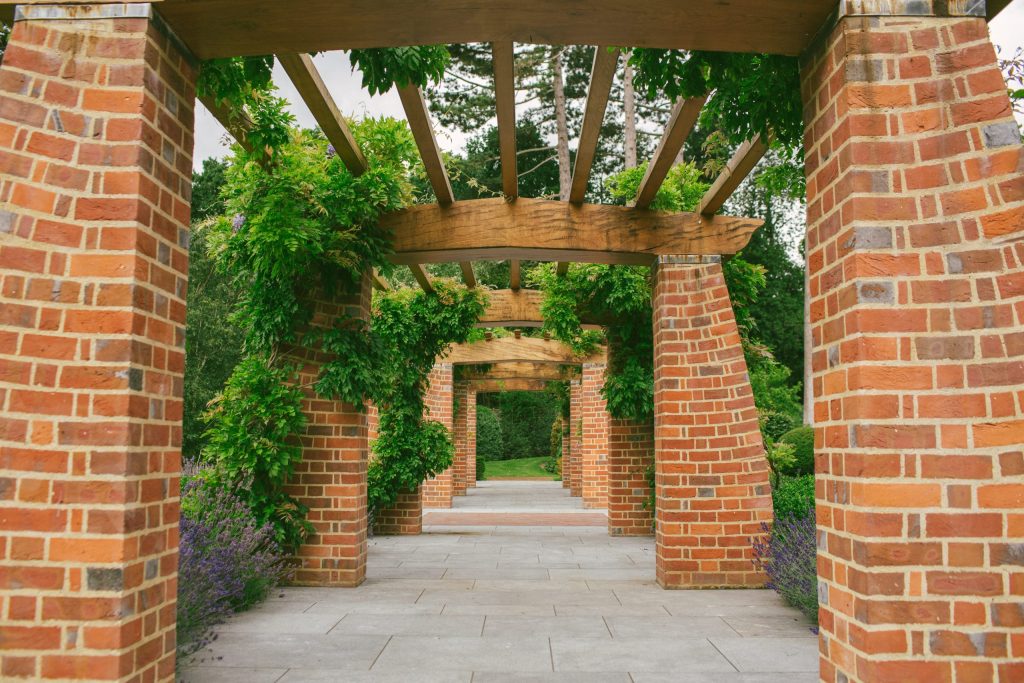
Through the Wisteria covered loggias
The pool is created with a semi-circular ring of honed Irish Blue Kilkenny Limestone surrounded by flame-textured stone of the same variety, with the pool sides and base also in honed black Irish Blue Kilkenny, providing a depth that resembles that of a well. The front wall of the feature is crowned with a simple stone capping detail, that sweeps down either side to join the low dwarf walls framing the flower beds in front and retaining the raised path behind. The walls are constructed with the same oak-fired handmade bricks used in the main house and are capped with sandstone copings, both providing the vital material link back to the main house.
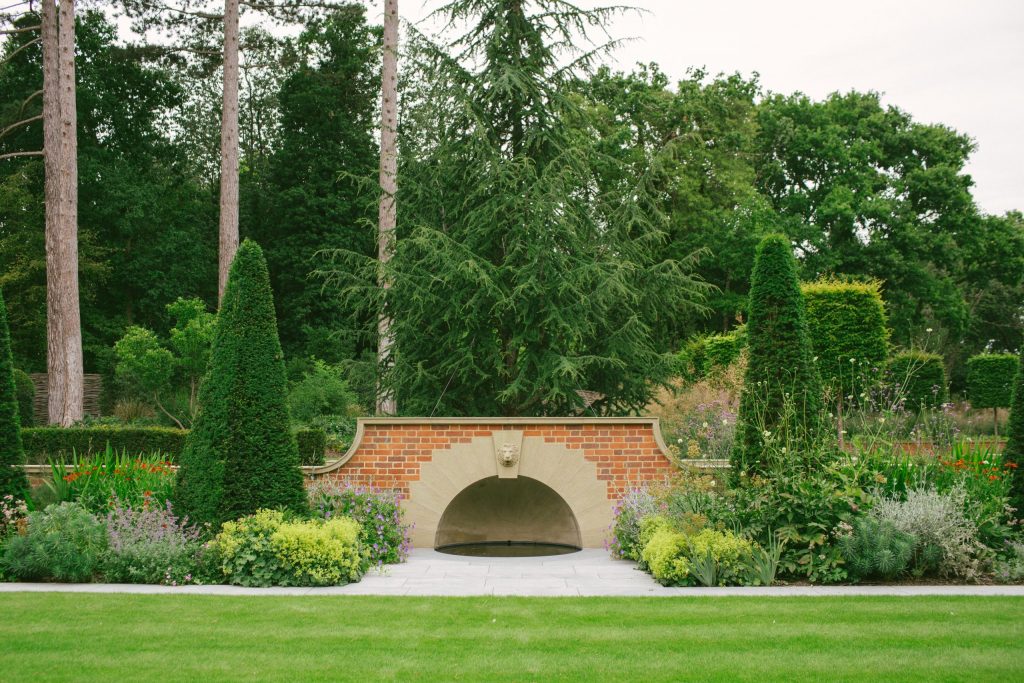
Stone apse fountain with circular pool and bridge over
‘A prominent way this language was continued was through the use of materials….’
The aim was not to create a garden or garden features that were disparate to the main house, but rather to provide a continuation of the architecture throughout the gardens that would provide links, or pockets of moments read in conjunction with the language of the main house and its extensions. A prominent way this language was continued was through the use of materials and how these materials were both subtly matched and altered, such as using honed Kilkenny steps rather than flame-textured.
Beside the tennis court sits a small pavilion structure that I designed with Scott, constructed using four engineered oak posts supporting massive, cambered beams over the top. These, in-turn, support principal hip rafters for a pyramidal roof. A central octagonal boss to the apex is crowned with lead and an oak sphere, with a gently sweeping tiled roof to match the main house. Internally, the open structure is formed with the rafters on show, with their chamfered ends supporting oak sarking boards over the top. The back wall is tiled with its rear face facing the woodland, while the interior side of the wall is created using a x-brace frame with panelling between. As with the Summerhouse, lighting and speakers are concealed within the structure and are also cleverly integrated into the gardens beyond.
Whilst developing the designs of the main gardens, Jess and I also developed the main entrance gate piers and intermediate gate piers along the main drive. There were no gate piers or gates to speak of to the property at that time. We set about developing a design that created a small taste of what was to come in the house. The simple piers are created using solid sections of masonry with a tooled margin and scabbled field and alternating brickwork quoins, allowing for the rhythm of stone-brick-stone-brick up to the capitals which were created in the form of a large cornice section and stone sphere adorning the top. Inset between the piers are sets of beautifully made metal gates that were fabricated by Ironart of Bath to our designs, with an element of artistry also included by the metal workers. Either side of the gate piers are bespoke metal columns, that support metal railings linked to the posts. The columns, at over six foot high, were constructed in solid metalwork by our skilled colleagues at British Spirals and Castings and Alken Engineering and wrap both sets of piers and the Eastern fringes of the garden. This was developed further in the more elaborate decorative approach that we took to the pedestrian entrance gate piers on axis to the house.
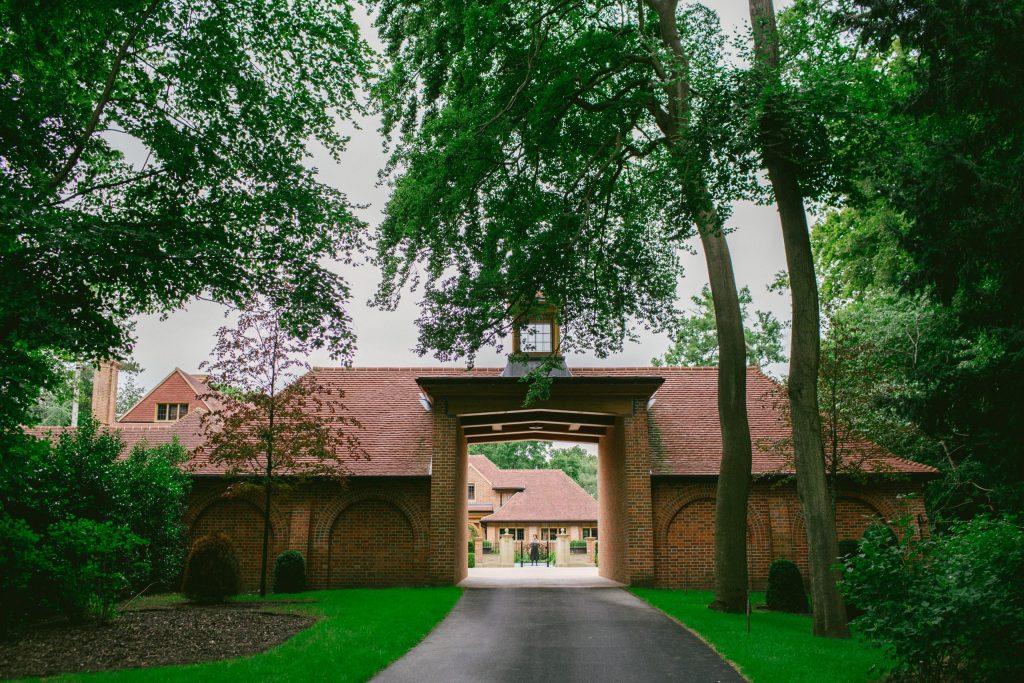
A view up the entrance drive towards the Gatehouse
‘….. for a pedestrian entrance into the North courtyard we created something a little different…..’
At this point in time, we had yet to conceive or design the gatehouse, it was merely a thought in the back of our minds, but we needed to develop a design that provided a transition between the garden area that the client wanted to create to the front of the house on its North elevation, and the area of driveway in front of the triple garages to the East wing of the house. I was conscious that I wanted to create something of detail at low-level in order to draw the eye towards the coach house and eventually the central frontis feature on the North elevation of the house. I also wanted to do something quite unusual, rather than just allow for a set of piers that would be a miniature version of the main entrance piers at the front of the property. So for a pedestrian entrance into the North courtyard we created something a little different.
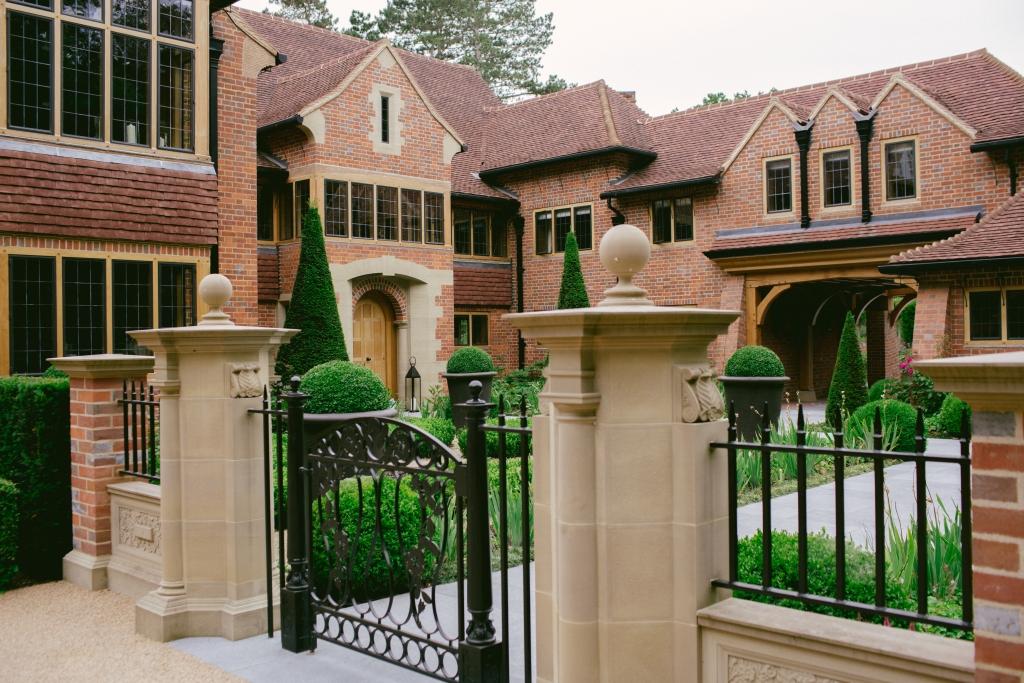
North pedestrian gate into the front courtyard garden of the house
‘….simple roundel details to the top, that was interlaced with the design of climbing roses….‘
For more photographs and details of the Stone piers, Gate and Carved plaques visit the Curiosities Emporium.
For more information on the above ‘Belvedere Garden Folly’, ‘Summerhouse’ and ‘Stables’ find their own writings in the Writings Library.
As with the main house, the construction of the gardens was a complex challenge, and the result is an example of how we can work closely with landscape designers to create gardens that enhance the setting of the house.
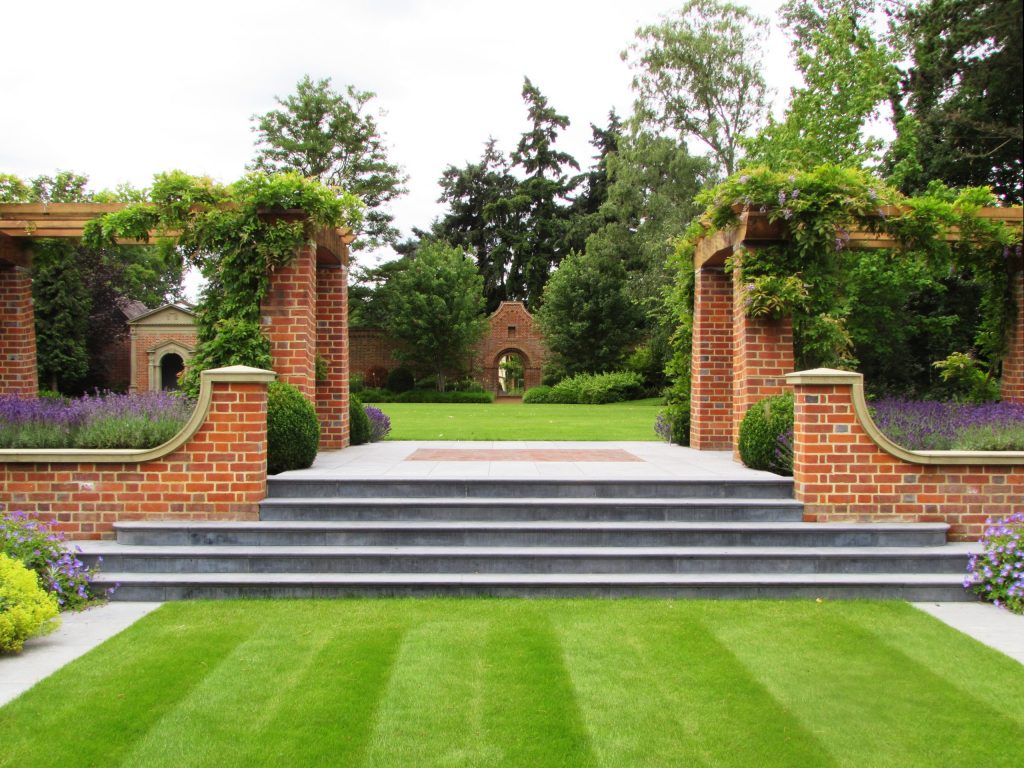
Immaculately crafted vistas
Return to the Writings Library for more essays and Project Profiles

